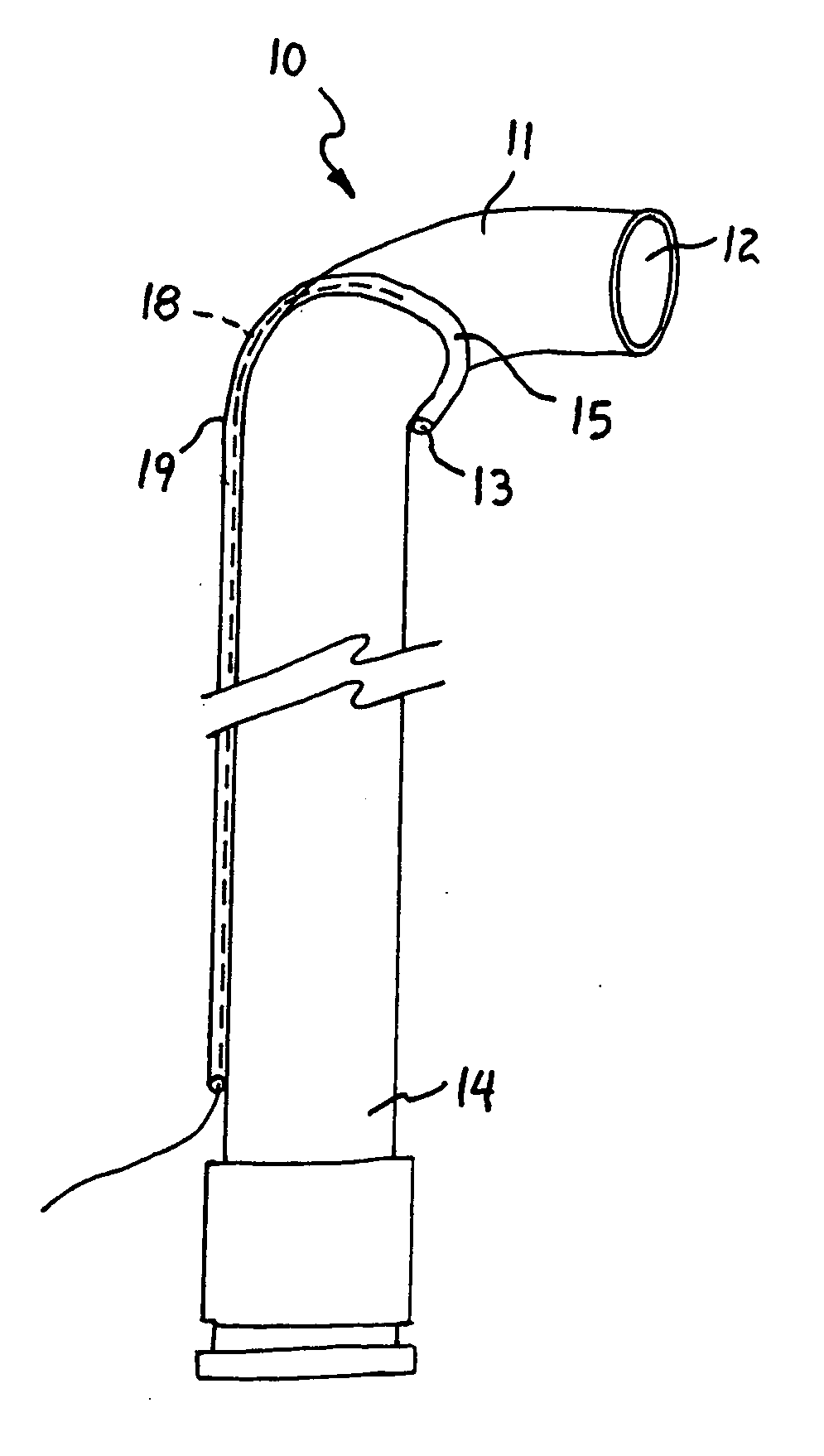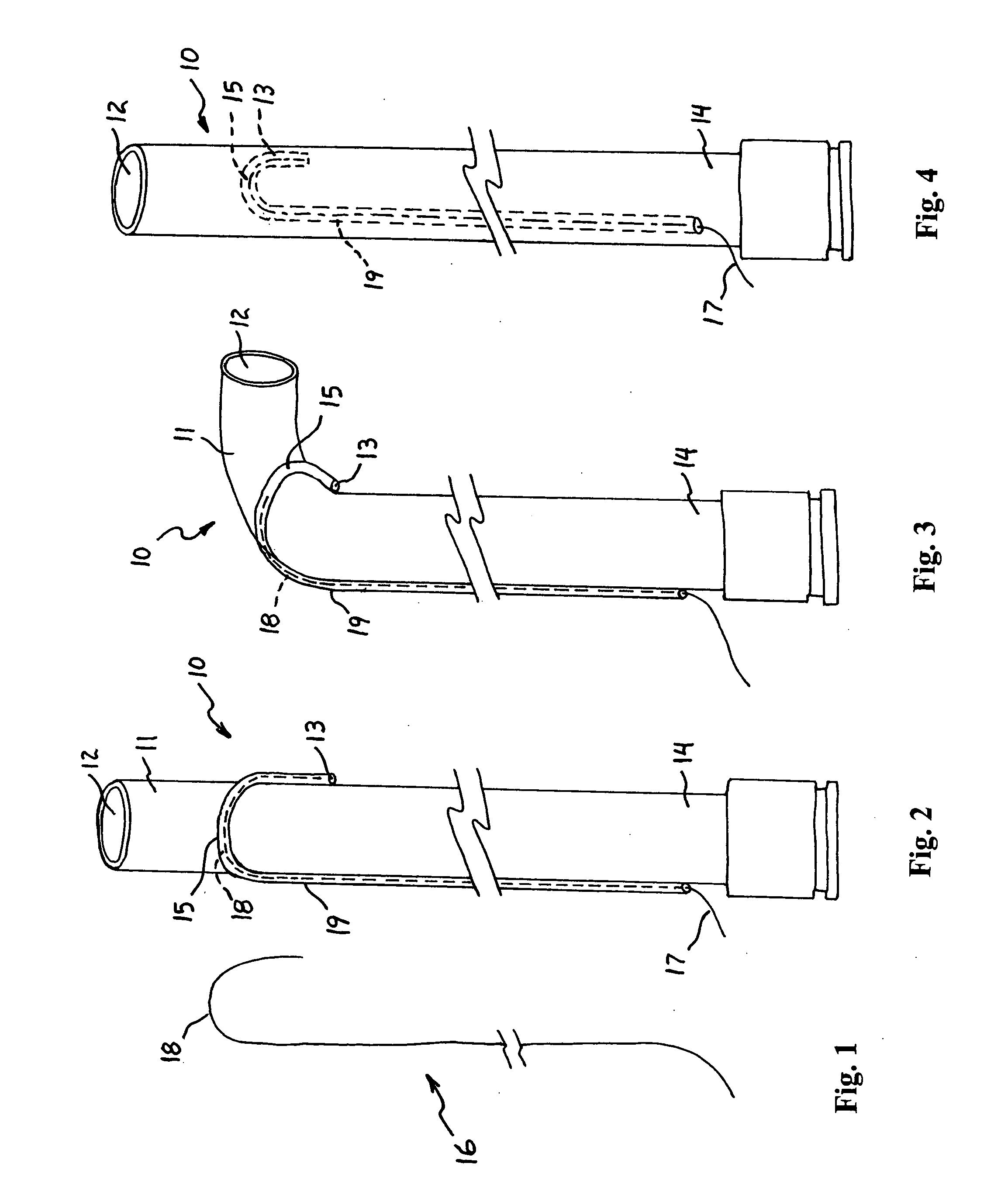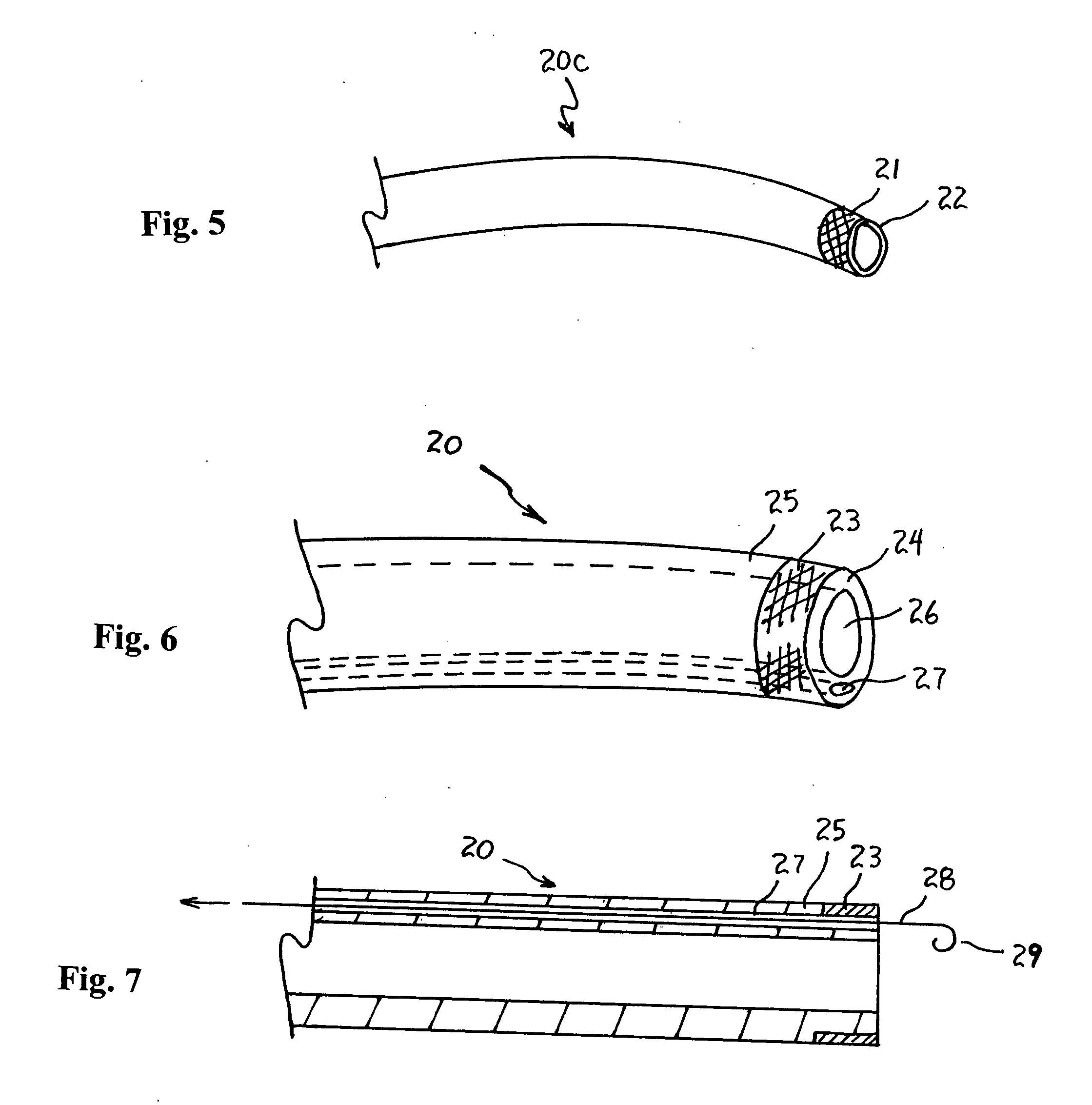Method and apparatus for curving a catheter
a catheter and curving technology, applied in the field of catheters, can solve the problems of requiring some rigidity, the soft wall of the catheter needed to make the curve shape is often crushed or kinked during use, and the curve cannot be “set” outside of the body, so as to improve the positioning within the vascular system
- Summary
- Abstract
- Description
- Claims
- Application Information
AI Technical Summary
Benefits of technology
Problems solved by technology
Method used
Image
Examples
first embodiment
[0027] A catheter 10 having a deflectable distal tip 11 according to the present invention will be described with reference to FIGS. 1 to 4 of the drawings. The catheter 10 includes a primary lumen 12 as in conventional catheters, and a secondary lumen 13 that is either attached to the primary lumen 12 (as shown in FIGS. 2 and 3) or contained within the wall of the primary lumen 12 (as shown in FIG. 4). The secondary lumen 13 transverses the primary lumen 12 from the proximal end 14 of the catheter 10 to near the distal end 11 where it forms a partial loop configuration 15 (e.g., 180 degrees as shown in FIG. 2) and begins to track back toward the proximal end 14 of the catheter 10. Other shapes for the curved portion 15 of the secondary lumen 13 can also be used as long as the secondary lumen 13 has at least a portion near its distal end that is nonparallel to the primary lumen 12; i.e., the distal end of the secondary lumen 13 is curved, bent, or otherwise divergent from a path par...
second embodiment
[0033] A catheter 20 according to the present invention will now be described with reference to FIGS. 5 to 10 of the drawings. A conventional catheter 20c having a marker band 21 at its distal end 22 is shown in FIG. 5. The marker band 21 is typically provided for visualization to facilitate positioning the distal end 22 of the catheter 20c within the anatomy.
[0034] The catheter 20 according to the second embodiment is shown in FIGS. 6 to 9. The catheter 20 has a marker band 23 at its distal end 24, which can be used for visualization similar to the marker band 21 in the conventional catheter 20c of FIG. 5. The marker band 23 is formed of a hard polymer, while the other part 25 near the distal end of the catheter 20 is formed of a soft, flexible polymer material. The marker band 23 does not affect the overall flexibility of the catheter 20 because it only affects the catheter shaft for a very short region (i.e., the catheter 20 is stiff only where the marker band 23 is located).
[00...
PUM
 Login to View More
Login to View More Abstract
Description
Claims
Application Information
 Login to View More
Login to View More - R&D
- Intellectual Property
- Life Sciences
- Materials
- Tech Scout
- Unparalleled Data Quality
- Higher Quality Content
- 60% Fewer Hallucinations
Browse by: Latest US Patents, China's latest patents, Technical Efficacy Thesaurus, Application Domain, Technology Topic, Popular Technical Reports.
© 2025 PatSnap. All rights reserved.Legal|Privacy policy|Modern Slavery Act Transparency Statement|Sitemap|About US| Contact US: help@patsnap.com



